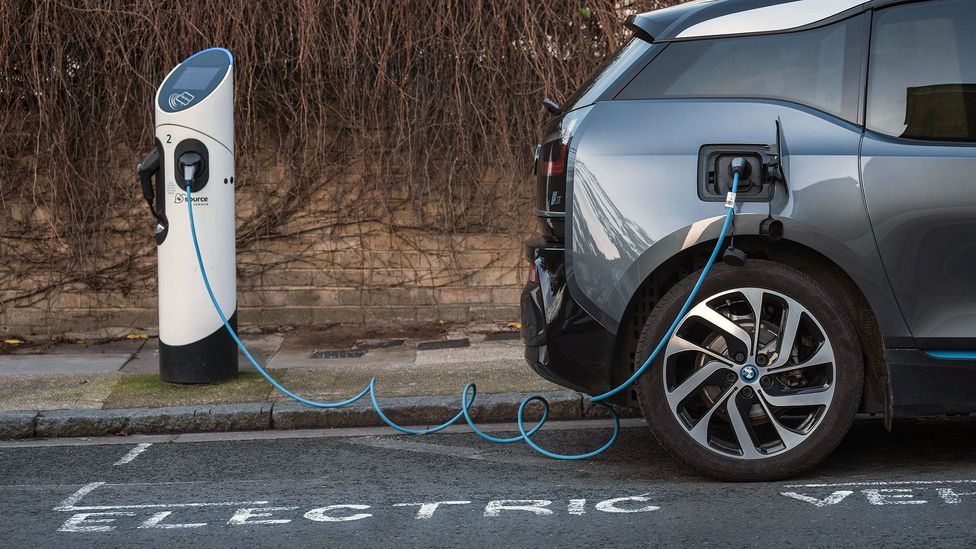The lithium-ion batteries in our devices degrade over time and come with a large environmental cost. Are there better ways to store and carry energy that are kinder to the planet?
T
They are the beating heart of our modern portable technology – packets of energy that we can charge from a plug in the wall and slowly drain through the course of a day. Lithium-ion batteries have transformed our ability to store and carry energy around with us, and so, in turn, revolutionised the devices we use.
First commercialised by Sony in 1991 as the company sought a solution to the limited battery life of its handheld camcorders, they power many of the gadgets we use today – from smartphones and laptops to electric toothbrushes and handheld vacuum cleaners. At the end of last year, the three scientists behind its invention won the Nobel Prize in Chemistry for enabling this technical revolution.
And our need for them is only likely to grow. Electric vehicles are reliant upon lithium-ion batteries as a substitute for the fossil fuels we currently pour into our cars. As renewable energy sources make up more of the electricity supply around the world, huge battery banks are likely to be needed to store excess energy for times when the wind doesn’t blow or the Sun isn’t shining. Worldwide more than seven billion lithium-ion batteries are sold each year and that is expected to grow to more than 15 billion by 2027.

This has spurred scientists around the world to try and develop new types of battery that can overcome these problems. By harnessing a range of materials, from diamonds to super-stinky fruit, they hope to find new ways of powering the technologies of the future.
Lithium-ion batteries work by allowing charged lithium particles (ions) to move electricity from one end to the other, passing through a liquid electrolyte in the middle. One of the things that makes lithium-ion batteries so attractive is their “energy density” – the maximum energy a battery can hold for its volume – which is one of the highest of any commercially available battery on the market. They can also deliver higher voltages than other battery technologies.
Batteries are essentially made of three key components – a negative electrode, a positive electrode, and an electrolyte between them. The roles of the electrodes switch between cathode and anode depending on whether the battery is charging or discharging. In lithium-ion batteries, the cathode is typically made from a metal oxide that includes and another metal. When charging, lithium ions and electrons move from the cathode to the anode where they “stored” as electrochemical potential. This occurs through a series of chemical reactions in the electrolyte that are driven by the electrical energy flowing from the charging circuit. When a battery is in use, lithium ions flow in the opposite direction from the anode to the cathode through the electrolyte, while electrons flow through the electrical circuit of the device the battery is installed in, providing it with power.
Over the years, tweaks to the materials used in the cathode and anode have helped to improve the capacity and energy density of lithium-ion batteries, but the most dramatic improvements have been in the falling cost of the batteries.“It’s got to a point where the chemistry developed 35 years ago has plateaued,” says Mauro Pasta, a materials scientist at the University of Oxford and project leader at The Faraday Institution, who is working on the next phase of lithium-ion batteries. His aim is to boost the energy density of lithium-ion batteries while also increasing their efficiency so they don’t lose power over repeated charges and discharges.Our thirst for battery power is only likely to grow in the coming years as the range of portable electronic paraphernalia in our lives increases
To do this, Pasta is focused on replacing the highly flammable electrolyte fluid found in modern lithium-ion batteries with a solid made from ceramic. Using a solid reduces the risk of electrolytes combusting in the event of a short or unstable cell, which was behind Samsung’s 2017 recall of 2.5 million Galaxy Note 7s after a series of battery fault fires. It’s important for future safety, as even the polymer-gel electrolyte found in most of our portable electronics is still flammable.
This solid state battery also makes it possible to use dense lithium metal instead of the graphite anode, which significantly increases the amount of energy it can store in the process. It could have huge implications on the future of driving.
Right now, every electric vehicle contains the equivalent of thousands of iPhone batteries. As electric vehicles look set to replace those run on fossil fuels in many countries in the coming years, the shift towards solid state batteries would mean longer journeys and more time between recharges.
Our thirst for battery power is only likely to grow in the coming years as other modes of transport attempt to go electric and the range of portable electronic paraphernalia in our lives increases, so should we be looking for alternatives to lithium that could ease the impact it has on the environment?
source:BBC News
Comments
Post a Comment